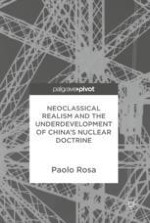2018 | OriginalPaper | Buchkapitel
4. Nuclear Doctrine as a Continuation of Factional Politics by Other Means, 1964–1971
verfasst von : Paolo Rosa
Erschienen in: Neoclassical Realism and the Underdevelopment of China’s Nuclear Doctrine
Aktivieren Sie unsere intelligente Suche, um passende Fachinhalte oder Patente zu finden.
Wählen Sie Textabschnitte aus um mit Künstlicher Intelligenz passenden Patente zu finden. powered by
Markieren Sie Textabschnitte, um KI-gestützt weitere passende Inhalte zu finden. powered by
